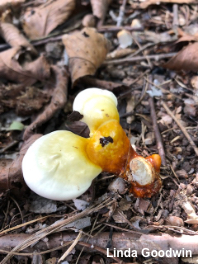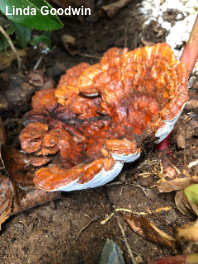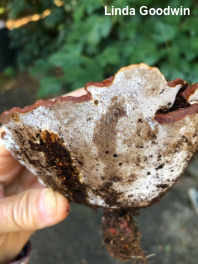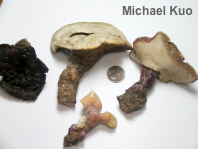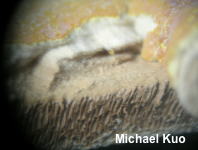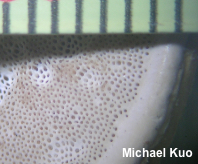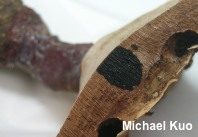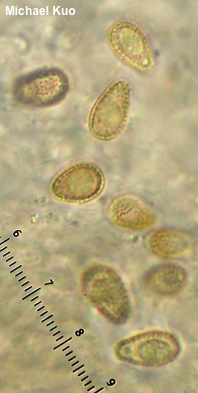| Major Groups > Polypores > Ganoderma > Ganoderma curtisii meredithiae |

|
Ganoderma curtisii meredithiae [ Basidiomycota > Polyporales > Polyporaceae > Ganoderma . . . ] by Michael Kuo This gorgeous Ganoderma is actually just a form of Ganoderma curtisii; like the latter mushroom it has a shellacked, brownish red cap, a tendency to produce a well-developed stem, and melanoid bands (see discussion) in its flesh. However, while Ganoderma curtisii grows on the wood of hardwoods and is widely distributed from the Rocky Mountains eastward, Ganoderma curtisii meredithiae grows on the wood of pines and is limited to the southeastern United States. Ganoderma meredithiae was first described as a new species in 1988 (Adaskaveg & Gilbertson), but recent DNA investigation by Loyd and collaborators (2018) failed to support the idea that Ganoderma meredithiae is a phylogenetic species distinct from Ganoderma curtisii. The authors proposed Ganoderma curtisii f. sp. meredithiae as an "informal classification," reducing Ganoderma meredithiae to the status of a "special form" of Ganoderma curtisii. Because the designation is informal, the combination will not be found in official taxonomic registers (MycoBank or Index Fungorum, for example), creating a bit of confusion because Ganoderma meredithiae is still a "good species" in these indices, since Loyd and collaborators did not propose deprecating synonymy. Thanks to Linda Goodwin for collecting, documenting, and preserving Ganoderma curtisii meredithiae for study; her collection is deposited in The Herbarium of Michael Kuo. Description: Ecology: Saprobic and parasitic on the living or dead wood of pines (species of Pinus, with bundled needles); causing a white rot, often as a butt rot; growing alone or gregariously; annual; spring through fall; distributed in the southeastern United States. The illustrated and described collection is from North Carolina. Cap: 3–10 cm across; 2–6 cm deep; more or less semicircular in outline, or irregularly kidney-shaped; surface with a lacquered-looking outer crust; zoned with yellow, white, and red when young, maturing to red, brownish red, or reddish brown overall; bald. Pore Surface: Whitish to pale brownish when young, becoming medium brown with age; bruising darker brown; with 3–4 tiny, circular pores per mm; tubes 0.5–1.5 cm deep. Stem: 2.5–4 cm long; 1–2 cm thick; lateral and angled; bald; lacquered like the cap; brownish red to reddish brown or, in age, black. Flesh: Tough but not woody; whitish when young but soon very pale brown; with melanoid bands (see discussion) but without concentric growth zones. Odor and Taste: Not distinctive. Chemical Reactions: KOH instantly black on flesh and tubes. Microscopic Features: Spores 8–12 x 6–7 µm including the hyaline vesicular appendix; more or less ellipsoid, with a slightly truncated end; appearing double-walled, with a series of "pillars" between the walls; finely stippled; inamyloid; dull golden brown in KOH. Cystidia and setae not found. Hyphal system trimitic. Clamp connections present. REFERENCES: Adaskaveg & Gilbertson, 1988. (Loyd et al., 2017; Loyd et al., 2018.) Herb. Kuo 09222001. This site contains no information about the edibility or toxicity of mushrooms. |
© MushroomExpert.Com |
|
Cite this page as: Kuo, M. (2020, October). Ganoderma curtisii meredithiae. Retrieved from the MushroomExpert.Com Web site: http://www.mushroomexpert.com/ganoderma_curtisii_meredithiae.html |
